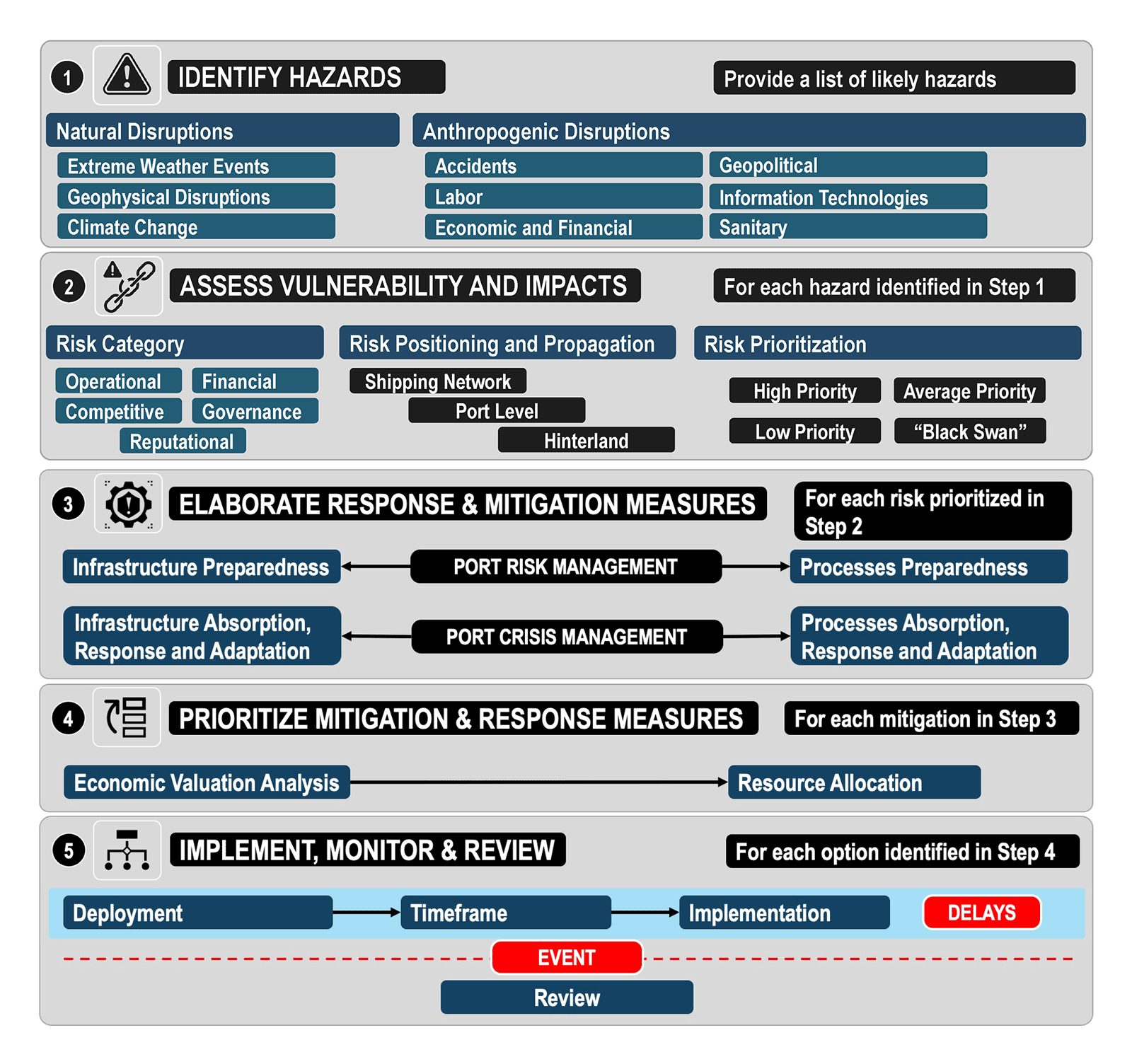Shipping and ports are essential for global trade and supply chain continuity both during and outside crises. The COVID-19 pandemic and the heightened disruptions to global maritime logistics observed over recent years have underscored the critical importance of risk management and emergency response preparedness and the need to build ever more agile and resilient maritime transportation systems.
Although the strategic importance of ports for maritime shipping, trade and interrelated economic activities is widely acknowledged, ports and their stakeholders – shipping lines, cargo owners and terminal operators, among others – can still face disruptions that undermine their ability to effectively support global trade and interlinked supply chains. Maintaining the integrity of these complex supply chains requires continuous efforts, with port resilience being a critical element. Many ports are unable to assess which disruption is likely to occur; however, many also know that a future disruption remains a certainty.
Building and enhancing port resilience remains a challenge with obstacles, delays and sometimes unclear financial trade-offs. To the extent that port resilience, or a part of it, is perceived as a cost centre, inertia is a likely outcome, and reactive post-event approaches would remain the norm. A port is likely to be compelled to revise its strategy only after a disruptive event, particularly if the financial and commercial impacts were significant. Resilience is better promoted when perceived as a competitiveness and business continuity factor. Difficulties faced as part of efforts to mainstream environmental sustainability principles into commercial and business practices illustrate the complexity of some of these issues and the magnitude of the challenge in resilience building efforts.
Over the years, however, and in the context of growing sustainability momentum, sustainability and environmental protection issues are increasingly seen as a competitiveness factor. Perception and policy changes, such as the push towards decarbonization, have played an important role in this respect. A similar outcome is likely to result from resilience, which can become a “default” feature of ports and maritime supply chains of the future and emerge as a core element of port operations and management. This new paradigm would put more emphasis on preventive and proactive strategies, such as pre-event planning.
This guidebook aims to guide and assist stakeholders acting in the field of maritime transport, especially ports that handle container traffic in their efforts to build their capacity to enhance preparedness in the face of disruptions and strengthen their ability to absorb shocks, maintain business continuity, recover and even thrive.
Figure 44 synthesizes a proposed approach to port resilience-building. The approach is articulated around five key steps. While not exhaustive, a list of relevant tools, instruments, resources and standards supporting risk management and resilience-building objectives have also been identified (Port Risk Management and Resilience-Building Toolbox and Annex IV). By adapting and tailoring many of the existing tools and solutions to a port context, stakeholders in the sector can better foresee and prevent adverse events, ensure a timely response and build back better.
The five steps to port risk management and resilience-building are as follows:
- Identify hazards. Provide a list of the most likely natural and anthropogenic hazards that have historically and could potentially impact a port.
- Assess vulnerability and impacts. For each of these hazards, provide a categorization of the type of risks, for example: (i) are they operational, financial, competitive, governance and reputational risks; (ii) how could they likely propagate along the supply chains supported by the port; and (iii) what is their priority (low to high).
- Elaborate response and mitigation measures. Two major approaches, one related to port risk management, proactively identifies and prepares a port to mitigate likely disruptive events. The second is port disruption/crisis management, which reactively sets response strategies once an event has occurred.
- Prioritize mitigation and response measures. Economic valuation analysis, such as cost/benefit analysis, can be performed to evaluate the cost of selected mitigation measures, including the potential costs of inaction and opportunity costs. It is then possible to prioritize the measures considering the availability and scarcity of resources.
- Implement, monitor and review. The deployment of response measures and mitigation options can face a series of opportunities and obstacles, resulting in delays common in large infrastructure projects. The occurrence of a disruption event represents an opportunity to review the effectiveness (or the lack of) of existing measures and revise options.
Figure 44: Synthesis of a port resilience-building process

